Where India stands on research and innovation
-
- from Shaastra :: vol 01 edition 01 :: May - Jun 2021

The break-out in China’s growth was also accompanied by a break-out in its research and innovation. India has made strides in research and innovation, but it continues to be held back by several fundamental factors.
I NNOVATION IN India has a glorious civilizational history. The legendary Wootz steel, which traces its origins back to parts of southern India, in present-day Tamil Nadu, in the first millennium BCE, bears testimony to ancient India’s steel-making prowess. The name Wootz is believed to be the Anglicised derivative of urukku or ukku, the Tamil and Kannada words for steel, respectively. There are countless other such monuments to Indian ingenuity.
But in the more modern era, India’s track record of innovation has been characterised by sobering underperformance. On the metrics scales that grade countries on the pillars that support innovation, India punches below its weight, particularly when compared to its peer, China. We dissect these data sets to understand what it might take for India to build an innovative society.
howindialives.com is a database and search engine for public data
1 The Ranking
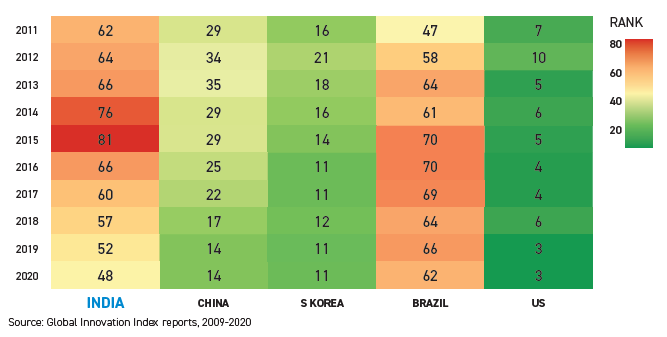
INDIA WAS RANKED 48 in 2020 in the Global Innovation Index, a quantitative and multi-dimensional capture of how innovative a country is. But its own path over the past decade stands in contrast to China, which has constantly improved its rankings, and South Korea and the US, which have maintained their lead in innovation. India’s journey is more akin to Brazil, another large country with huge promise. The answer to why India has trodden this path lies in several upstream factors, ranging from universities to government funding of research and development to researchers.
2 The Base
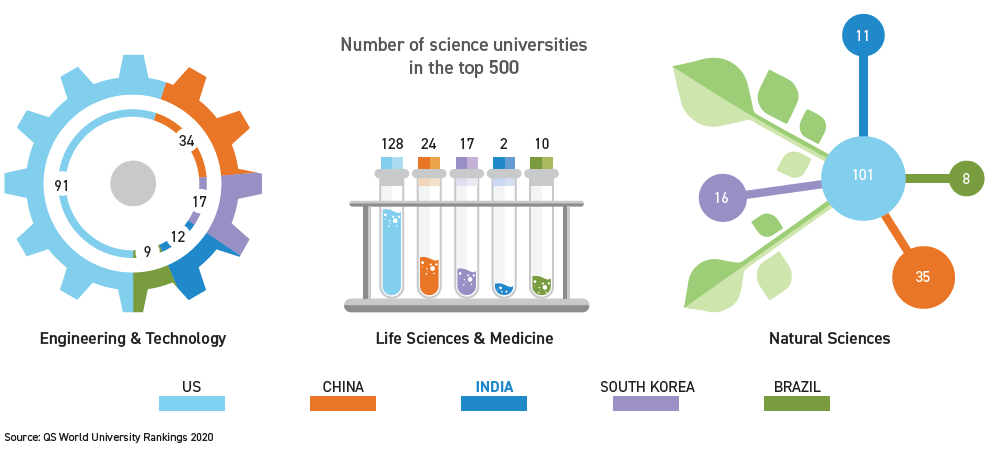
A. TOP UNIVERSITIES
UNIVERSITIES PLAY AN IMPORTANT ROLE in the innovation ecosystem. The role played by Stanford in the Silicon Valley ecosystem is well-documented. China’s rise as an innovation powerhouse was also accompanied by an improvement in the quality of its universities. India has about half a dozen universities in the top 100 of the QS World University Rankings 2020 in three broad domains of science. What it lacks is depth, as underscored by the yawning gap between its elite universities and an average university.

B. DOCTORAL DEGREES
WHILE THE NUMBER of doctoral students in India has increased in the last 15 years, two things stand out. One, China has widened its lead over India significantly. Two, India’s growth has stagnated. Between 2010 and 2015, there’s hardly been any growth in the annual number of doctoral students India produces, which is at odds with what more innovative countries have done.
C. RESEARCH POOL
AMONG THE five select countries, India has the lowest number of researchers in research and development as a share of population. This is to be expected in a country where only one in four persons in the college-going age bracket goes to college. That said, the number of researchers per capita is growing, suggesting that India is able to attract more people into research.
D. R&D EXPENDITURE
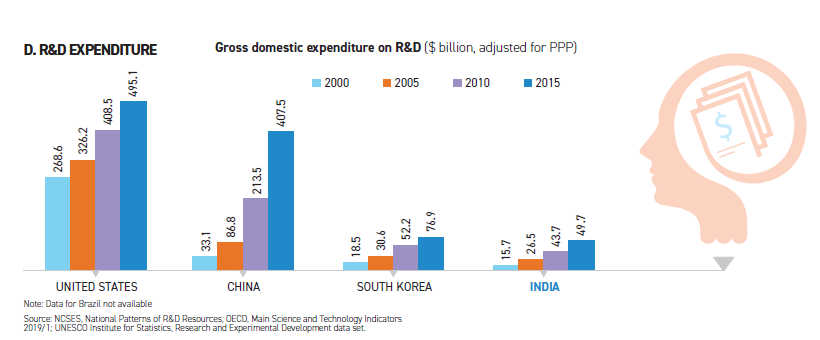
3 The Output
A. SCIENTIFIC AND TECHNICAL JOURNAL ARTICLES
BETWEEN 2000 and 2018, India has seen a four-fold growth in the number of journal articles in scientific and engineering areas. During the same period, China saw a near 10-fold growth.
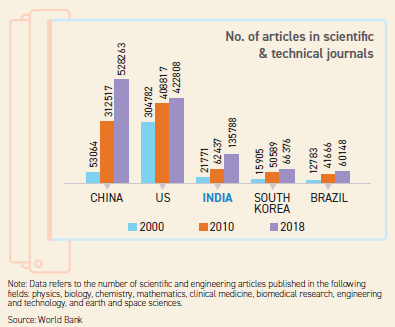
B. SHARE IN TOP 1% CITED ARTICLES
HOWEVER, numbers alone don’t suffice. Influence also matters. In terms of its research being cited in the top articles, India was on par with China in 2005. But India has stagnated since, while China has gained significant traction.
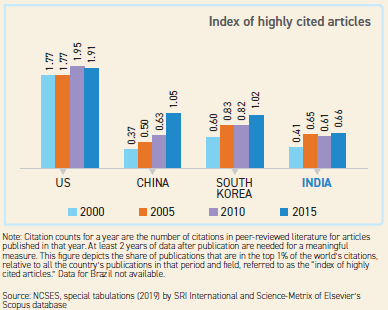
C. INTERNATIONAL COLLABORATIONS
INTERNATIONAL COLLABORATION is both a lagging indicator of the quality of research and a leading indicator of future research. In 2018, among the top 15 producers of science and engineering articles, India trailed in international collaborations.
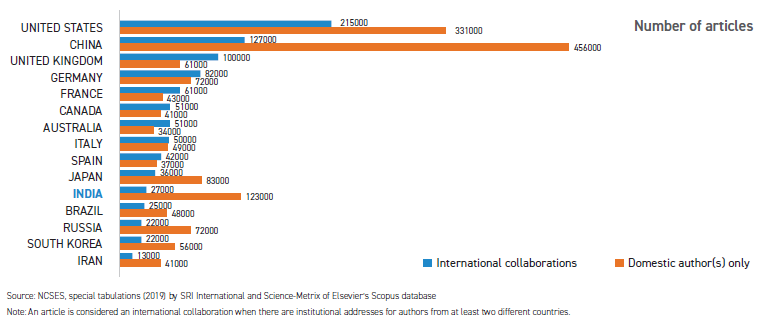
Have a
story idea?
Tell us.
Do you have a recent research paper or an idea for a science/technology-themed article that you'd like to tell us about?
GET IN TOUCH














